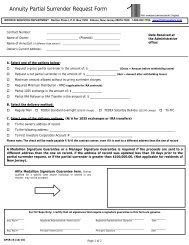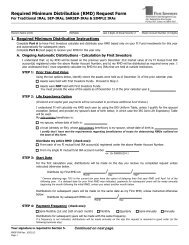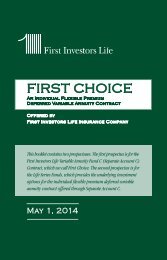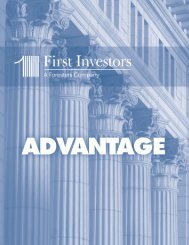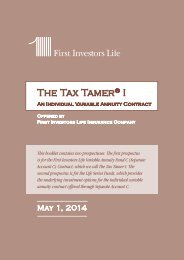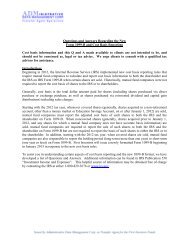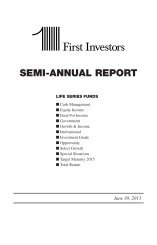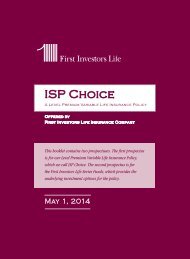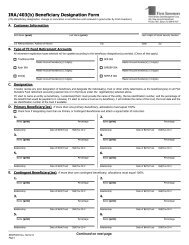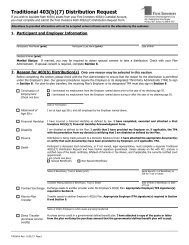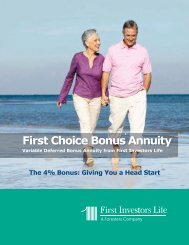Portfolio of Investments - First Investors
Portfolio of Investments - First Investors
Portfolio of Investments - First Investors
You also want an ePaper? Increase the reach of your titles
YUMPU automatically turns print PDFs into web optimized ePapers that Google loves.
Understanding Your Fund’s Expenses (unaudited)FIRST INVESTORS INCOME FUNDSFIRST INVESTORS EQUITY FUNDSAs a mutual fund shareholder, you incur two types <strong>of</strong> costs: (1) transaction costs, includinga sales charge (load) on purchase payments (on Class A shares only) and a contingent deferredsales charge on redemptions (on Class B shares only); and (2) ongoing costs, includingadvisory fees; distribution and service fees (12b-1); and other expenses. This exampleis intended to help you understand your ongoing costs (in dollars) <strong>of</strong> investing in the Fundsand to compare these costs with the ongoing costs <strong>of</strong> investing in other mutual funds.The examples are based on an investment <strong>of</strong> $1,000 in each Fund at the beginning <strong>of</strong> theperiod, April 1, 2013, and held for the entire six-month period ended September 30, 2013.The calculations assume that no shares were bought or sold during the period. Your actualcosts may have been higher or lower, depending on the amount <strong>of</strong> your investment and thetiming <strong>of</strong> any purchases or redemptions.Actual Expenses Example:These amounts help you to estimate the actual expenses that you paid over the period.The “Ending Account Value” shown is derived from the Fund’s actual return, and the“Expenses Paid During Period” shows the dollar amount that would have been paid by aninvestor who started with $1,000 in the Fund. You may use the information here, togetherwith the amount you invested, to estimate the expenses that you paid over the period.To estimate the expenses you paid on your account during this period, simply divideyour ending account value by $1,000 (for example, an $8,600 account value divided by$1,000 = 8.60), then multiply the result by the number given for your Fund under theheading “Expenses Paid During Period”.Hypothetical Expenses Example:These amounts provide information about hypothetical account values and hypotheticalexpenses based on the Fund’s actual expense ratio for each class <strong>of</strong> shares <strong>of</strong> a Fund,and an assumed rate <strong>of</strong> return <strong>of</strong> 5% per year before expenses, which is not the Fund’sactual return. The hypothetical account values and expenses may not be used to estimatethe actual ending account balance or expenses you paid for the period. You may use thisinformation to compare the ongoing costs <strong>of</strong> investing in the Fund and other funds. To doso, compare this 5% hypothetical example with the 5% hypothetical examples that appearin the shareholder reports <strong>of</strong> the other funds.Please note that the expenses shown in the table are meant to highlight and help you compareyour ongoing costs only and do not reflect any transaction costs, such as front-end orcontingent deferred sales charges (loads or account fees that are charged to certain types <strong>of</strong>accounts, such as an annual custodial fee <strong>of</strong> $15 for certain IRA accounts and certain otherretirement accounts or an annual custodial fee <strong>of</strong> $30 for 403(b) custodial accounts (subjectto exceptions and certain waivers as described in the Funds’ Statement <strong>of</strong> Additional Information)).Therefore, the hypothetical expenses example is useful in comparing ongoingcosts only and will not help you determine the relative total costs <strong>of</strong> owning different funds.In addition, if these costs were included, your costs would have been higher.2




